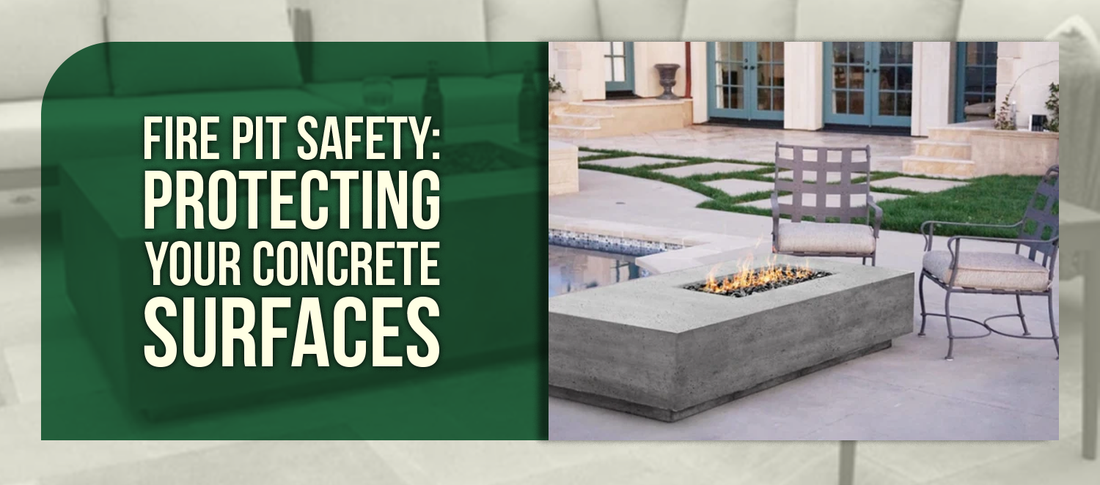
Fire Pit Safety: Protecting Your Concrete Surfaces
Essential guidance for backyard enthusiasts on preventing heat damage and creating safe outdoor fire experiences
Transform your backyard into an enchanting gathering space with a fire pit, but proceed with caution when placing it on
concrete surfaces. Especially during colder months, you'll want to protect your investment in your outdoor living space.
Concrete slabs are favored choices due to their strength and contemporary appearance, but there's one significant concern: will a fire pit cause damage to the concrete surface?
Heat-related damage and surface cracking are legitimate concerns when positioning a fire pit directly on a concrete surface. However, with proper precautions, you can enjoy your fire pit without compromising your patio's integrity.
Table of Contents
-
Will a Fire Pit Cause Concrete Damage?
-
Elements That Influence Damage Severity
-
Protecting Your Concrete Surface from Heat
-
Constructing a Permanent Fire Feature on Concrete
-
Final Recommendations
Will a Fire Pit Cause Concrete Damage?
When positioning a fire pit on a concrete surface, heat exposure is one of the primary concerns. Extended heat from the fire can result in surface cracking, aesthetic blemishing, and gradual deterioration of the concrete structure over time.

This occurs because the intense temperatures cause the concrete to expand unevenly, particularly if the heat penetrates deep into the concrete or if the surface is constructed with inappropriate aggregate materials. Over time, but even immediately, especially with continuous use, the damage can become significant.
Understanding these heat-related risks helps in mitigating fire damage and preserving your patio's appearance for years to come.
Elements That Influence Damage Severity
The type of fire pit you use plays a crucial role in determining potential damage to your concrete surface. Gas-burning fire pits tend to produce more consistent heat compared to traditional log-burning units, thereby reducing the risk of thermal shock.
Furthermore, the construction material of the fire pit matters significantly. Steel fire pits conduct and distribute heat differently than copper alternatives.
Another key element is the distance of the fire pit from the concrete surface. Fire pits positioned directly on the surface transfer significantly more heat, while elevating the fire pit or implementing a heat barrier can substantially reduce the risk of cracking or aesthetic damage.
Using a concrete fire pit table is another stylish and safer option, as many models are designed with built-in insulation and raised structures that limit direct heat exposure to the surface.
Protecting Your Concrete Surface from Heat
Safeguarding your concrete surface from fire pit damage is all about implementing the right techniques. One of the most effective options is placing a fireproof mat or similar pad beneath the fire pit to create a protective barrier.
You can also add an additional layer of protection by placing concrete pavers or fire bricks under the pit, which helps distribute heat more evenly and prevents direct contact with the surface.

Another effective method is to raise the fire pit off the concrete, either by using a stand or a platform. Elevation helps reduce heat exposure, giving your concrete surface a longer life.
Shop Fire Pit AccessoriesConstructing a Permanent Fire Feature on Concrete
If you're constructing a permanent fire pit on a concrete surface, using the right materials is essential for both safety and durability.
Start with fire bricks, which act as insulation, shielding the concrete from direct heat exposure. Pair these with heat-resistant mortar designed to withstand high temperatures without deteriorating.






